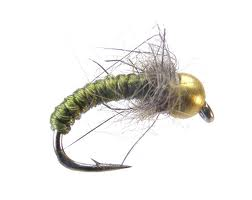
On The Fly
November 2012
"Fly tying is a school from which we never graduate"
TYING NEWS
The Southern Oregon Fly Tyers invite you to attend their meetings the second Tuesday of
each month. The next meeting is November 13, 2012. The meetings start at 6:00 PM, at the Madrone Hill
Mobile Home Park community building near Gold Hill. Bring a friend, come early so you don't miss
anything, and stay late. Tyers need not be experienced, and those with all levels of skill are
welcome. Each meeting a member is encouraged to demonstrate a new or different skill, from simple
to difficult. For more information, call Dan Kellogg at 773-4724.
DIRECTIONS: Take Gold Hill Exit #40, off of I-5 and go west, toward Jacksonville, 1.3 miles, until you
reach the brick entrance way to the Madrone Hill Mobile Home Park on the right. You’ll pass a golf course
parking lot on your left shortly after leaving the freeway. After you turn right into the
mobile home park, proceed to the community building which is located about 100 yards ahead on the left. The
address is 8401 Old Stage Rd. Please park your vehicle on the bare dirt in the parking lot to avoid the
wooden septic covers in the grass
 PATTERN OF THE MONTH –Beadhead Serendipity
PATTERN OF THE MONTH –Beadhead Serendipity
Hook: Daiichi 1130, Curved scud, 14-20.
Bead: Gold, size to match hook.
Thread: 8-0 brown.
Body: Olive Z-Lon twisted.
Thorax: Natural Hare's mask fur dubbing.
Tying Instructions:
Step 1: Mash the barb, slip a bead on the hook small hole first, and mount the hook in the vise.
Step 2: Start the thread just behind the bead and build up enough thread to hold the bead in place up
against the eye. A drop of head cement here will help also.
Step 3: Select a length of Z-Lon or poly yarn, thin it to match the hook size, and tie it on top of the
hook shank just behind the bead. Bind it down rearward to a point half way around the hook bend. Return the
thread forward to behind the bead.
Step 4 Grab the poly yarn material with a hackle pliers about 2 inches below the hook shank and spin
clockwise until the fibers are twisted into a tight rope. With the hackle pliers wind the rope forward in
touching turns to the bead. Tie off and trim excess.
Step 5: Dub a small amount of hare's ear dubbing to the thread and wind on forming a thorax about 1/8" wide.
Tie off and remove excess dubbing.
Step 6: Whip finish just behind the bead, cement, and pick out a few guard hairs on the thorax.
The Beadhead Serendipity is one of many variations of the Serendipity that is actually an
old pattern from Europe where it is known as a Buzzer. The late Ross Marigold, a Madison River guide, is
credited as the creator of today's version. The pattern started out as a smooth floss body of brown or olive
with a gold wire ribbing. Ross added a clipped deer hair wing to the fly just behind the eye. Later, he
modified the body with a twisted floss or Antron yarn to give the appearance of a segmented body and spun
the deer hair for the head. In 1988 Ross introduced the fly to Craig Mathews of Blue Ribbon Flies utilizing
Z-Lon for the body. In the version listed above we have replaced the deer hair head with a beadhead and a
hare's ear thorax.
Beadhead nymphs attract trout in a couple ways that standard nymphs do not. They add
extra weight to take the fly down quickly but most important the bead resembles a flash that many natural
nymphs and pupae acquire when they crate a bubble of air between their inner and outer skins just before
emergence. Some feel that a bead also adds a jigging action that the trout like. Whatever the reasons, they
do work very well. Any standard nymph can be tied with a bead added to the head.
Tying Tips
Since the Beadhead Serendipity imitates a wide range of aquatic insects a wise man would
do well to tie several in all four sizes. The trick here is to create a rope that is proportionate to the
hook size. Just adjust the quantity of poly fibers selected from the hank. Color variations include olive,
brown and copper colors or mixtures of two or more. Australian opossum dubbing can be substituted for the
Hare's ear. This is an easy tie using common and inexpensive materials. So tie some up, give them a test
flight and let me know how you do.
Tie One On,
Dan Kellogg
(you can contact me at FLYGUY@EZNORTHWEST.COM)
www.tyerstoolshop.com